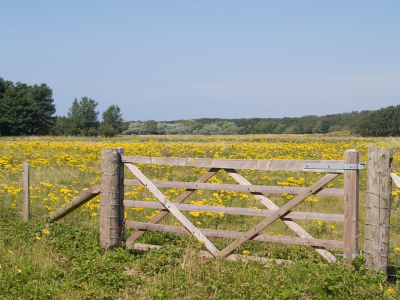Ragwort in Paddocks
What is Ragwort?
 Ragwort is a Biennial plant and thrives on insufficiently managed horse pastures, railway embankments, road verges and wasteland.
Ragwort is a Biennial plant and thrives on insufficiently managed horse pastures, railway embankments, road verges and wasteland.
The seeds from ragwort germinate and in the first year you will see evidence in the form of ‘rosettes’ which will appear in early Spring. The following year, the rosettes will start their aerial growth resulting in tall stems that produce bright yellow flowers. Seeds are then produced, these are shed by wind and can be transferred by animals on their fur, by hooves, muddy boots etc where they start another generation of ragwort plants either on your own land or on someone elses.
Ragwort seeds are not fussy! Each ragwort plant can produce up to 200,000 seeds. The seeds are like mini parachutes, similar to those of a dandelion, which means they have the potential on a windy day to travel a long way. Not all of the seeds will germinate, it depends on if the conditions are suitable. However, seeds can lie dormant for 15 years or more and if the area is ‘disturbed’ and the seeds are brought to the surface again, the whole cycle of germination to flowering continues once more.
Why is Ragwort such an issue?
Ragwort poisoning in horses is a well documented issue. Ingestion of the pyrrolizidine alkaloid toxin contained in ragwort typically results in the delayed onset of chronic, progressive liver failure.
Control of Ragwort
Improving and then maintaining the quality of pasture should be the long-term priority to ensure the prevention of ragwort growth. Should ragwort begin to show signs of establishment in a paddock it is advisable to remove it immediately before it can begin its life cycle and eventually spread new seed.
If ragwort is not an extensive problem, this is the most basic option of control. However, you do run the risk of leaving fragments of root which will remain in the ground. In this case, the likelihood of new growth should to be carefully monitored and then removed annually. All pulled plant material should be removed and burnt to prevent all animals from eating it.
Mowing will not kill the ragwort plant, it can actually encourage growth. However, in an emergency situation mowing may prevent seed production
Spring is the best time for spraying ragwort, when they are at rosette stage but before any aerial growth occurs. At this stage the ragwort is quickly and far easier to control and also more economical as you will use less product.
However, it is too late if hay production is intended. Spraying for hay production should be carried out in the previous autumn.
As the ragwort dies it should be removed and burnt before pasture can be grazed. All animals should be removed from the affected are and not reintroduced until all of the ragwort has completely died and it has been removed and burnt.
BARRIER H - Organic ragwort Control
Barrier H is the world's first herbicide made using only natural plant derivatives from sustainable resources. This environmentally friendly and effective all year round control for Ragwort, is sold as a ready to use 'spot spray' in a 5L container. To be used in conjunction with a hand held or back pack sprayer. Within hours of application, small rosettes are dead - right through to the roots.